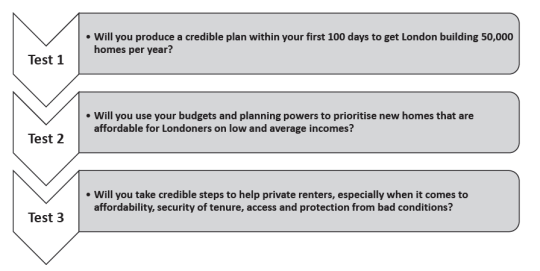It’s safe to say that housing was the key issue for Londoners heading to the polls last month – with the election fought by the eventual winner, Sadiq Khan, as a ‘referendum on housing’. But if the Mayor is to achieve his ambition of delivering the homes Londoners need, then he’ll need to consider all the options – including the green belt.
We’re encouraged to see that Sadiq Khan has started using his planning powers right from the beginning of his Mayoralty. The Mayor has robust powers to call in planning applications, which are a powerful tool to ensure developments include enough affordable housing. However, at the start of a four year Mayoralty, we don’t want to see any options for housing delivery ruled out. While we wouldn’t take a position on any specific development, we’re disappointed that the Mayor has used this as an opportunity to reaffirm his general opposition to using the green belt – especially given his broader commitment to providing the new homes that London needs.
At the beginning of the electoral campaign, Shelter set out our three tests for the new Mayor – which we used to assess each candidate’s proposed policies. They are the basis on which we will now hold the Mayor to account.

Ahead of the election, Shelter commissioned planning consultancy Quod to look at what land is actually available for housebuilding in London. Brownfield land is often cited as the solution to London’s housing need; we wanted to find out how much brownfield land is actually available for housebuilding, and what other options the new Mayor needs to consider in order to build the 50,000 homes per year that London so desperately needs. What we found is that most brownfield land suitable for housing delivery is already allocated in London’s land supply. There is still brownfield land that could and should be used – but it tends to be more complex sites, and will be slow, difficult, and expensive to prepare for development.
We looked at other options for increasing housing delivery too: from tall buildings and intensifying density, to estate regeneration, a new garden cities programme, and even green belt release. Ultimately we realised – the Mayor is going to have to use a little bit of each of those, and make some difficult decisions, in order to get the homes Londoners need built.
The green belt is a vital component of the British planning system – both in order to protect areas of outstanding beauty or environmental worth, and in order to prevent chaotic, poorly-serviced urban sprawl. However, it isn’t all unspoilt rolling countryside – it also includes a fair amount of buildings, brownfield and industrial land. In the midst of a national housing crisis, which is felt most acutely in London – it is vital to take a pragmatic view of all the options available for delivery.
It would by no means be appropriate to use the green belt as a blunt tool to meet London’s housing need. But where a site would otherwise be thought of as brownfield, and could accommodate some new homes – it should be very carefully considered. The task of solving London’s housing supply crisis is no minor undertaking, and the fewer options the Mayor leaves available, the more difficult the challenge will be. We’ll be watching closely in the coming months.
